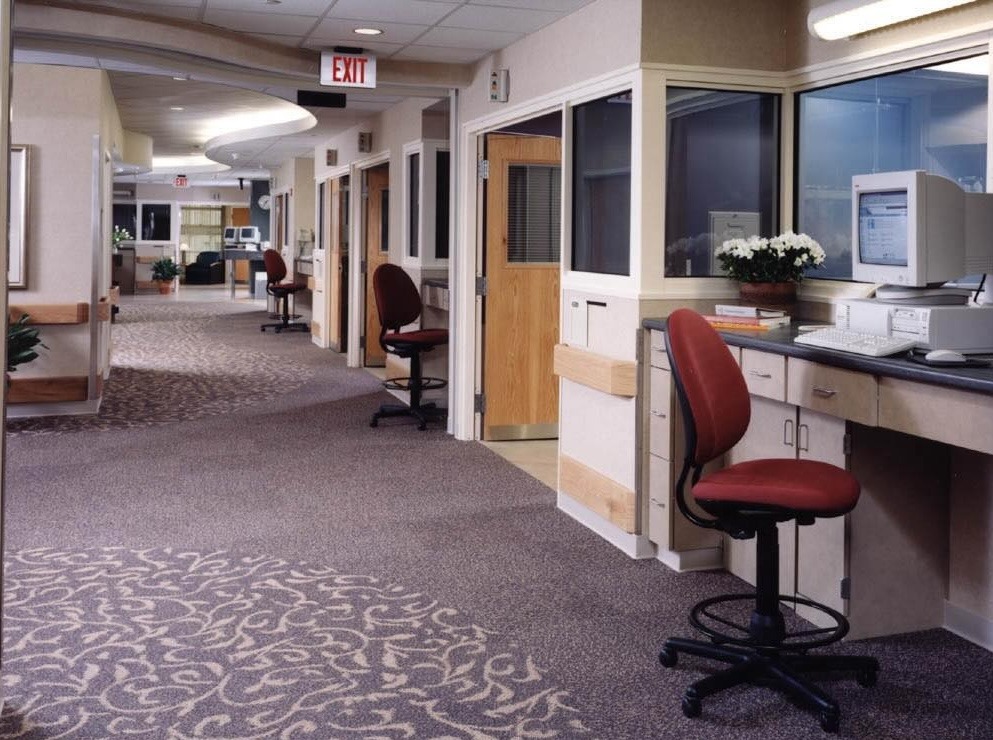Lots of people responded to my post a few weeks ago on the eight historic events that have affected healthcare facility design and construction.
Some of you offered your own ideas on what to add to the list. So here are three more events, in chronological order:
1. Roger Ulrich's "View Through a Window May Influence Recovery from Surgery," 1984
I can't believe that I forgot this in my first post, because this single study that was published in Science magazine probably touched off the entire evidence-based design movement.
It was the first time views of nature were linked to patient outcomes. It was also a well-designed study that produced evidence that is still influencing design choices today.
Among other things, Roger's work changed how healthcare facilities are sited, the size of windows in patient rooms, and encouraged the integration of outdoor spaces and access to natural daylight. It also spawned a whole industry of products designed to bring nature indoors.
And 35 years later, it's still the go-to reference for talking about the health benefits of nature in healthcare facilities.
2. Northridge Earthquake in California, 1994
This 6.7 quake in the San Fernando Valley of Los Angeles lasted about 10-20 seconds and its peak ground acceleration was the highest ever recorded in an urban area.
Several aftershocks followed. Fifty-seven people died and more than 8,500 people were injured. The overall property damage was estimated to be $13-$50 billion -- $3 billion of it to hospitals.
After this tragic event, legislators in California amended the seismic safety act for hospitals. Five structural and five non-structural classifications of hospital building seismic safety levels were mandated, along with deadlines for upgrades.
This, of course, resulted in billions of dollars spent in California on renovations or replacement of existing hospital buildings. It also offered the opportunity to incorporate the latest design and construction ideas and "push the envelope,"which created a ripple effect on the entire U.S. hospital design industry.
3. IOM's "To Err is Human: Building a Safer Health System," 1999
When the Institute of Medicine (IOM) came out with this report, it set off the alarm bell that healthcare in the U.S. was not as safe as it should and can be. At the time, it was estimated that at least 44,00o people, and perhaps as many as 98,000 people, died in hospitals each year as a result of preventable medical errors.
To achieve a better safety record, the report recommended a four-tiered approach that included raising awareness of the problem nationwide, developing mandatory and volunteer reporting systems, raising performance standards, and implementing safety systems in all hospitals.
Almost immediately, the Clinton administration issued an executive order instructing government agencies that conducted or oversaw healthcare programs to implement proven techniques for reducing medical errors. A task force was also created to find new strategies for reducing errors.
The U.S. Congress soon launched a series of hearings on patient safety, and in December 2000 it appropriated $50 million to the Agency for Healthcare Research and Quality to support a variety of efforts targeted at reducing medical errors.
All this put the spotlight on safety, and it prompted healthcare designers to talk to their clients about ways in which the design of the built environment could help reduce medical errors.
And while it's hard to directly link elements of the built environment to medical errors, it did put the focus on things that could reduce staff stress, such as acoustics, workspace design, access to nature, and areas for respite.
Take My Survey
Is there one historic event that you think had the most impact on healthcare facility design and construction? How would you rank all of them that I've identified in my posts?
Take my one-question survey to weigh in!
P.S. Please do me a favor -- if you liked this post and like this blog, please share it with others by sending them the link or posting it on your Twitter, LinkedIn, or Facebook. Also, don't forget to subscribe, so you'll get emails when new content is posted. Thanks!






